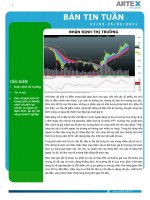Organ systems OS set 02 neuroscience b question
Bạn đang xem bản rút gọn của tài liệu. Xem và tải ngay bản đầy đủ của tài liệu tại đây (90.38 KB, 3 trang )
High Yield Warm-up Questions: Neuroscience, Part B
ORGAN SYSTEMS SET 2: NEUROSCIENCE, PART B
1.
Name the different specific functions of the trigeminal nuclei including the main sensory nucleus of V, the
motor nucleus of V, the spinal nucleus of V and the mesencephalic nucleus of V.
2.
List the following five neural structures in order of activation that will result in a voluntary horizontal
movement of both eyes to the right; PPRF, frontal eye field, abducens nerve, oculomotor nerve, MLF. Indicate
whether the neural structure on the right of left will be stimulated.
3.
Warm water is introduced into the right external auditory meatus. Under normal conditions, what neural
structures will be activated in order to produce a fast phase of a caloric evoked nystagmus to the right?
4.
Compare and contrast the functional motor differences in the cerebellum and the basal ganglia, the important
neuron and neural structures involved in each and the transmitters that they use.
5.
Parkinson’s disease and Huntington’s disease are degenerative conditions that preferentially affect the direct
and indirect basal ganglia pathway, respectively. What are the causes of each condition, where will neuronal
degeneration be present in each and name a common sign of each condition.
1
High Yield Warm-up Questions: Neuroscience, Part B
6.
Name the FOUR neurons or neural structures that are linked together to form the sensory and motor limbs of
the pupillary light reflex.
7.
Name two characteristics that can distinguish a visual system lesion that occurs in an optic nerve, at the optic
chiasm, or to the optic tract. Use the terms monocular or binocular, heteronymous or homonymous, and
ipsilateral or contralateral as possible characteristic terms to describe each lesion.
8.
Explain why a Meyer’s loop lesion of the visual radiations causes a contralateral and homonymous superior
quadrantanopsia.
9.
Name the functions of the following four common thalamic nuclei: VPL, VPM, Medial geniculate nucleus,
Lateral geniculate nucleus.
2
High Yield Warm-up Questions: Neuroscience, Part B
10. Compare and contrast the different functions of the supraoptic, suprachiasmatic and arcuate hypothalamic
nuclei.
11. A 56-year-old male is a chronic abuser of alcohol who develops Korsakoff’s psychosis. What vitamin is
deficient and where in the diencephalon will there be neuronal loss?
12. What anatomic lobes of the brain contain primary motor cortex, primary somatosensory cortex, visual cortex
and auditory cortex, and what are the cerebral artery(s) that supply each functional region?
13. Name and note the location of three speech centers (the motor speech center and the two language
comprehension centers) found on the lateral aspect of the left hemisphere.
14. A 65-year-old male suffers a stroke that causes a sensory aphasia. Where is the lesion site, what are the
symptoms of this aphasia, and what adjacent cortical area might also be affected?
These question sets are intended to be completed before viewing the High Yield course lectures.
Video explanations can be found on the Warm-up Questions page within the online High Yield course.
For further review of the topics covered in this set, refer to the following lectures:
Neuroscience:
• The Brainstem
• The Cerebellum, Basal Ganglia, and Movement Disorders
• The Eye and Visual Pathways
• The Diencephalon
• The Cerebral Cortex
3









